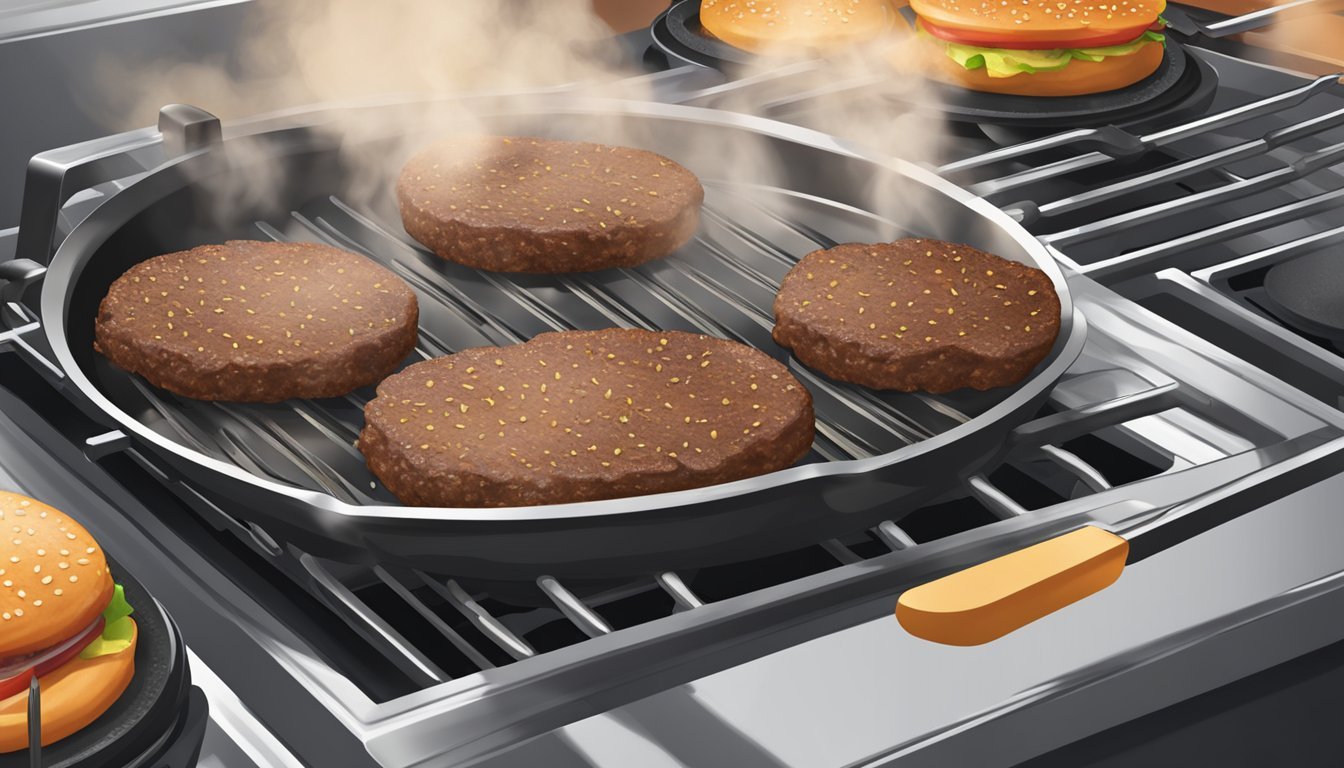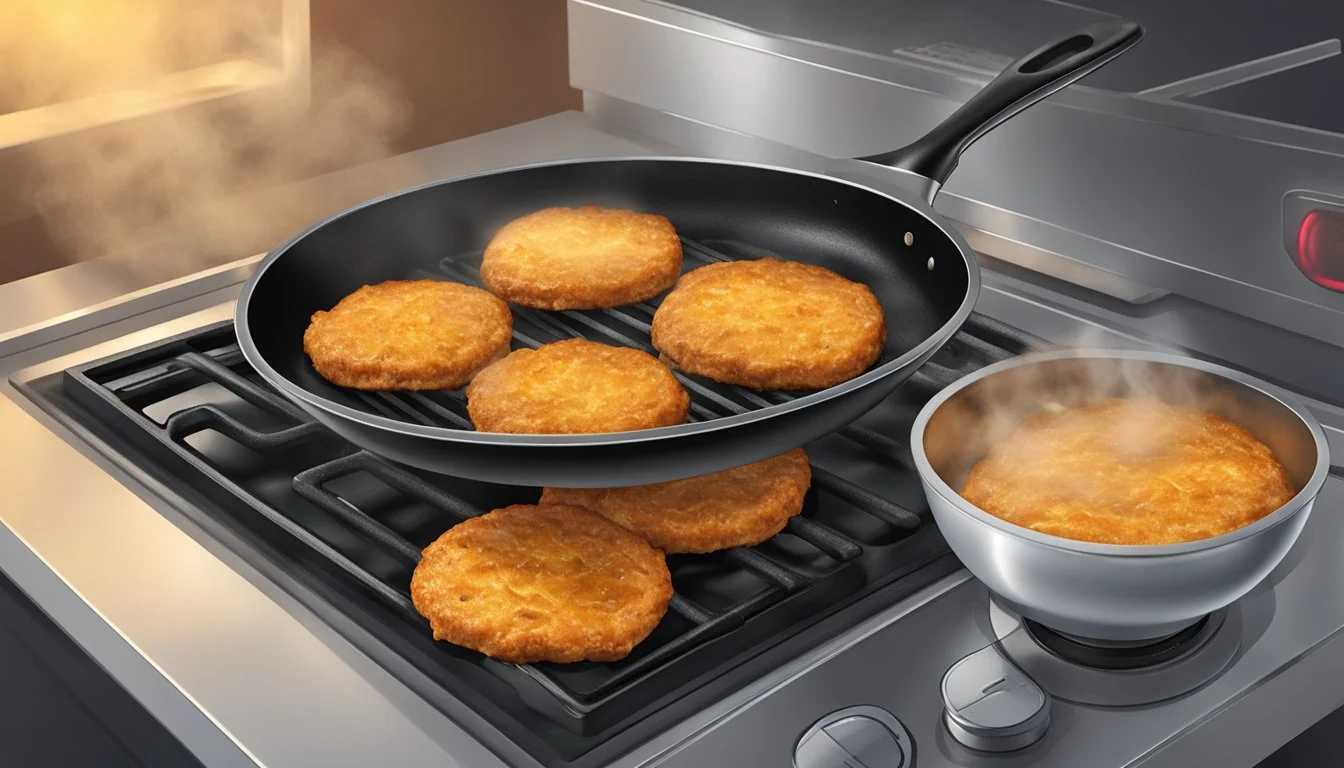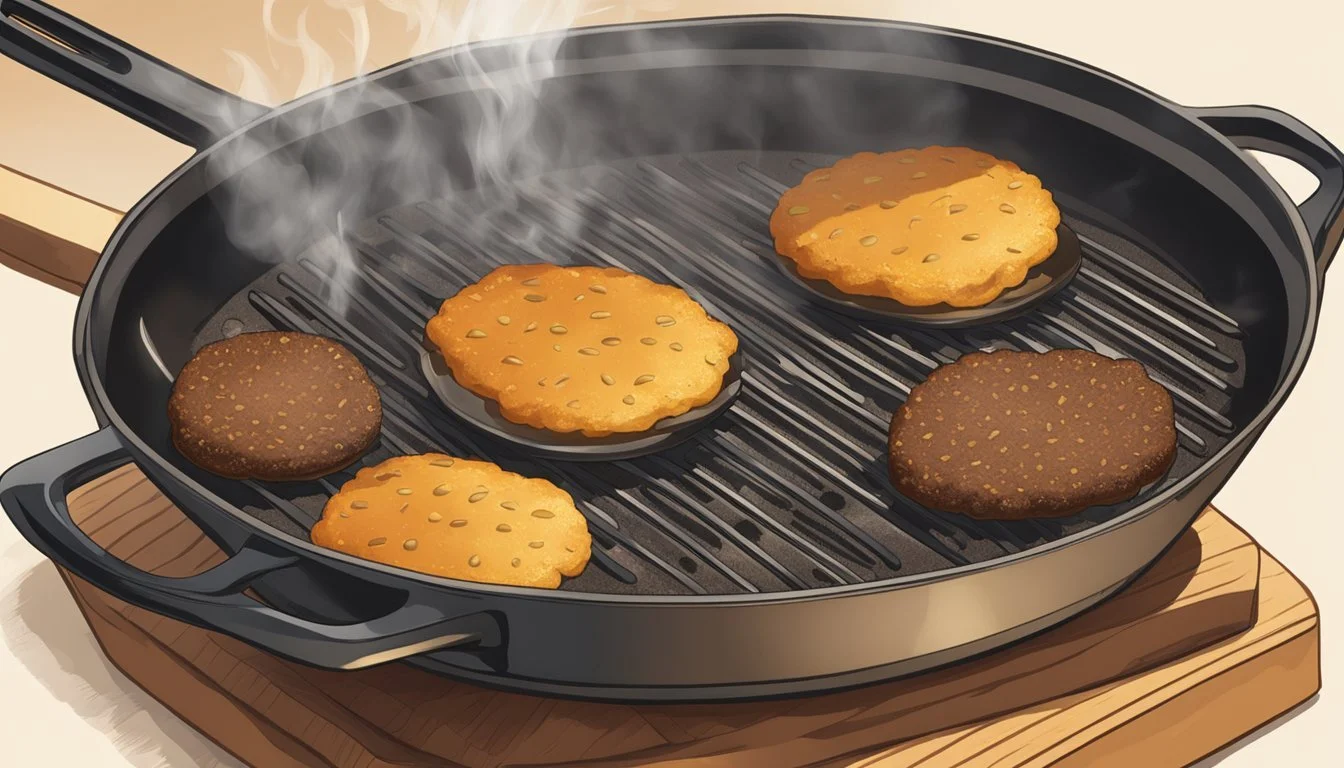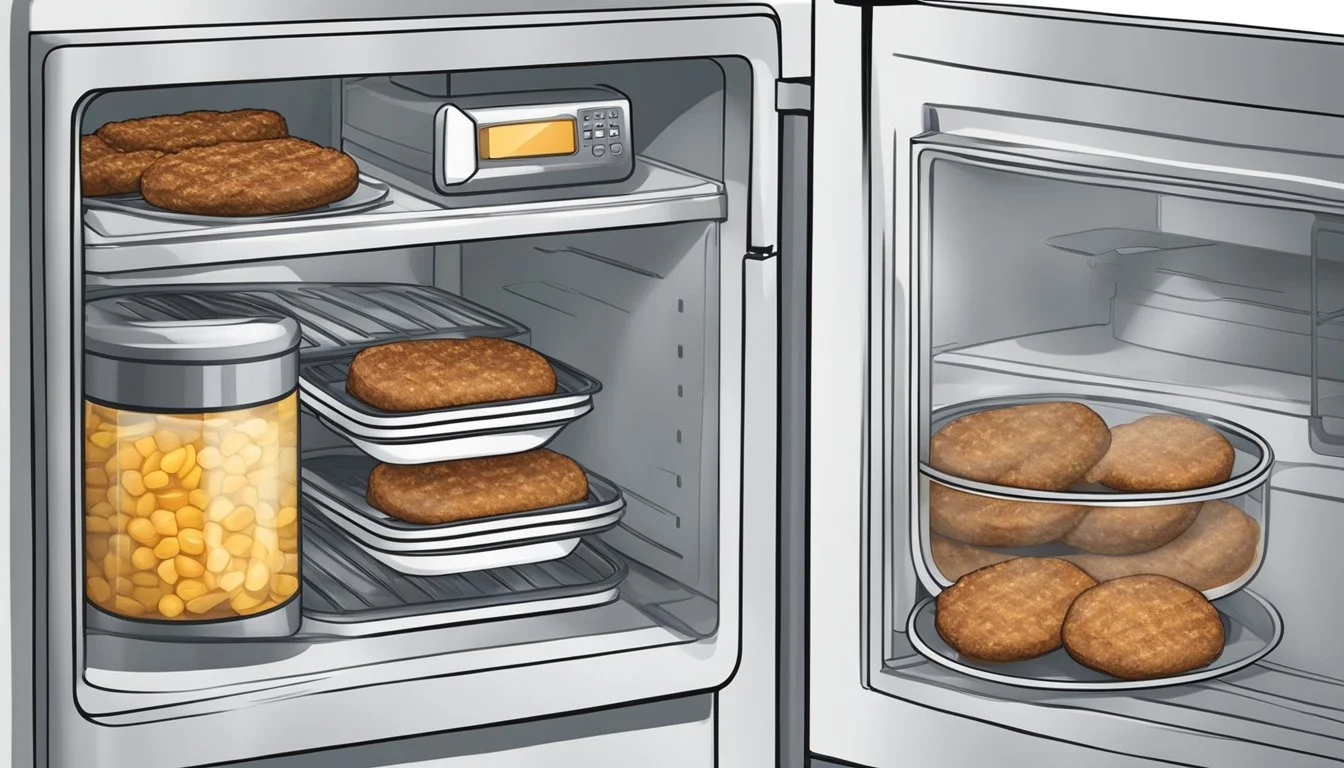How to Reheat Beef Patties for Juicy, Flavorful Results
Reheating leftover beef patties can be tricky, but with the right techniques, you can enjoy them as if they're freshly cooked. For the best quality, preheat your oven to 350 °F (177 °C), place the patties on a baking sheet, and heat them for about 10-15 minutes. This method ensures that the patties remain juicy and flavorful.
Using a microwave might be faster but requires caution to avoid uneven heating. Set the microwave to medium-low power, heating the patty for around 2 minutes per side and flipping halfway through. Always check that the internal temperature reaches at least 165°F (74°C) for safe consumption.
Another effective method is to reheat the patties on a stovetop. By using a skillet over medium heat and flipping the patty halfway through, you can maintain the texture and taste. Each method provides a practical solution for enjoying reheated beef patties without sacrificing quality.
Understanding the Basics of Reheating Beef Patties
Reheating beef patties can influence their texture and flavor if not done correctly. To ensure optimal quality, attention must be paid to both the reheated internal temperature and signs of readiness before reheating begins.
Effect of Reheating on Meat Texture and Flavor
Reheating beef patties affects both the texture and flavor significantly. Heating them too quickly or at too high a temperature can cause the meat to become tough and dry. The goal is to maintain a juicy interior while achieving a slightly crispy exterior.
Using an oven, preheat to 350°F (175°C) and place the patties on a baking sheet. This method helps keep the patties from drying out. For a softer crust, loosely cover them with aluminum foil. In an air fryer, reheat at the same temperature for 5-7 minutes, maintaining the crispness without additional oil.
Internal temperature is crucial. Patties must reach at least 165°F (74°C) to ensure they are thoroughly reheated and safe to eat. Use a food thermometer to check.
Determining Patties' Readiness for Reheating
Before reheating, it's essential to determine if the patties are suitable. Frozen patties require different handling than refrigerated ones. Frozen patties should thaw slightly to ensure even reheating.
Check for any signs of spoilage: off smells, discoloration, or texture changes. Only quality leftovers should be reheated.
Preparation before reheating involves proper placement on a baking sheet or air fryer basket, ensuring they aren't overcrowded. For microwave reheating, use medium-low power to prevent overcooking the exterior while leaving the interior cold.
Each reheating method shares a common goal: reaching the safe internal temperature for the best taste and texture, preserving the quality of the meat.
Preparation Techniques Before Reheating
Proper preparation ensures beef patties are reheated evenly and remain juicy. The following pointers help in getting the patties ready, covering aspects like temperature control and moisture retention.
Bringing Patties to Room Temperature
Allowing leftover patties to reach room temperature before reheating helps them cook more evenly. Cold patties straight from the refrigerator can take longer to warm, leading to the exterior becoming overcooked while the inside remains cold. Typically, patties should sit out for about 20-30 minutes.
If time is limited, placing the patties in a sealed plastic bag and submerging them in lukewarm water can expedite the process. This method maintains a consistent temperature and prevents the patties from drying out.
Moisture Preservation Strategies
Retaining moisture is crucial to prevent reheated patties from becoming dry and unappetizing. One effective technique is to place a damp paper towel over the patty when using a microwave, which helps lock in moisture.
For oven reheating, wrapping the patty in aluminum foil keeps it moist. Alternatively, placing the patty on a metal rack over a baking sheet and covering with foil can achieve similar results.
Using methods like sous-vide or an air fryer can also maintain moisture levels. The sous-vide method involves vacuum-sealing the patty and cooking it in water at a controlled temperature, while an air fryer uses fast-circulating hot air, preserving moisture without adding oil.
Oven Reheating Method
Using the oven to reheat beef patties can help maintain their texture and flavor. Proper temperature settings and the use of baking sheets are key to achieving even heating and a golden brown exterior.
Preheating and Temperature Settings
Preheat the oven to 350 degrees Fahrenheit for optimal results.
This temperature ensures the patties warm through without drying out.
The moderate heat allows the meat to reheat evenly. Place an oven thermometer inside to confirm accuracy.
Avoid higher temperatures to prevent the patty from becoming tough.
Using Baking Sheets and Foil for Even Heating
Place patties on a baking sheet lined with parchment paper. This prevents sticking and ensures even distribution of heat.
Cover the patties with aluminum foil.
Crimp edges to secure and trap moisture.
For a crispier texture, remove foil during the last few minutes.
Check the internal temperature using a meat thermometer. Aim for a safe 165 degrees Fahrenheit before serving.
Microwave Reheating Technique
Reheating beef patties in a microwave can be done efficiently if specific steps are followed to maintain moisture and avoid drying out the meat.
Arrangement of Patties and Usage of Paper Towels
Place the beef patties on a microwave-safe plate. Make sure they do not overlap to ensure even heating. Use a damp paper towel to cover the patties. This method helps to retain the moisture during the microwaving process, preventing the patties from becoming dry.
Turn the patties halfway through the heating time for uniform reheating. This is particularly important to avoid parts of the patties getting overly hot while others remain cold.
Timing and Power Level Adjustments
Set the microwave to medium or medium-high power. This level is typically sufficient to reheat without overcooking. Heat the patties for 30 seconds initially, then check the temperature.
If more time is needed, continue microwaving in 15-second intervals until the desired temperature is achieved. Resting the patties for a minute after microwaving can help redistribute the juices, making them as enjoyable as freshly cooked. Adjust these times based on the wattage of your microwave for optimal results.
Stovetop Reheating Approach
Reheating beef patties on the stovetop is a straightforward method that helps maintain a crispy exterior and warm, flavorful interior. Key considerations include selecting the right oil and achieving a perfect crisp.
Oil Selection and Pan Preheating
Choosing the right oil is crucial for the stovetop method. High smoke point oils such as canola, vegetable, or avocado oil work best. These oils withstand higher temperatures without burning, ensuring the patties heat evenly.
To begin, add a small amount of oil to a frying pan. Heat the pan over medium heat until the oil shimmers. Preheating the pan is important as it prevents the patties from sticking and allows them to start crisping immediately upon contact.
Achieving a Crispy Finish
Once the pan is preheated, place the beef patties in the pan. Allow them to cook for about 2-3 minutes on each side. Using a spatula, carefully flip the patties to ensure even reheating and a uniform crispy exterior.
For added texture, you might add a bit of butter or additional oil during the last minute of cooking. This step enhances flavor and crispness, making the patties more appealing. Ensure the internal temperature reaches at least 165°F (74°C) to verify they are fully reheated and safe to eat.
Toaster Oven and Air Fryer Reheating Methods
Reheating beef patties in both a toaster oven and an air fryer can provide efficient and tasty results. Each method offers unique benefits such as preserving a crispy texture and ensuring even heating.
Toaster Oven Technique for Reheating
Reheating beef patties in a toaster oven ensures an even distribution of heat and maintains a crispy texture. Start by preheating the toaster oven to 350°F (177°C). If the patties are frozen, consider letting them thaw at room temperature first for more consistent results.
Place the patties on a baking sheet, using foil underneath to catch any drippings and to make cleaning easier. Arrange the patties in a single layer to avoid overcrowded spots, which could lead to uneven reheating.
Insert the baking sheet into the preheated toaster oven. Reheat for approximately 10-15 minutes. Check the internal temperature with a food thermometer; it should reach at least 165°F (74°C) to ensure safe consumption. This method is effective for both fresh and frozen patties, though frozen patties may require an additional 5-10 minutes.
Air Fryer Usage for Quick Reheating
Using an air fryer to reheat beef patties is a quick and efficient method that can bring out a crispy exterior. Begin by preheating the air fryer to 350°F (175°C) for about 3-5 minutes. This step is crucial for achieving consistent warmth and texture.
Place the patties in the air fryer basket in a single, non-overlapping layer. Spritzing the patties lightly with olive oil can enhance the crispiness. Reheat the patties for 5-7 minutes, flipping them halfway through to ensure even heating.
Monitor the internal temperature to reach at least 165°F (74°C) before serving. This method delivers quicker results compared to a toaster oven, making it ideal for those in a hurry.
Additional Considerations for Special Beef Patty Types
Reheating beef patties, particularly those that are frozen or include various fillings and condiments, requires extra attention to ensure safety and maintain the desired texture and taste.
Reheating Frozen Jamaican Beef Patties
When dealing with frozen Jamaican beef patties, preheating the oven to 350°F (177°C) is crucial. Place the patties on a baking sheet, ensuring a single layer for even heat distribution. They should be reheated for 20-25 minutes. Checking the patties halfway through and flipping them helps achieve even heating. For those using an air fryer, setting it to 350°F (175°C) and reheating for 5-7 minutes should suffice. Always verify that the internal temperature reaches at least 165°F (74°C) using a food thermometer for food safety.
Working with Condiments and Fillings
Beef patties often include a variety of fillings and condiments. When reheating, it’s essential to prevent these from drying out. For moisture-rich fillings like cheese or sauces, covering the patties with aluminum foil during the initial reheating phase can help retain moisture. If using a microwave, setting it to medium-low power will prevent the condiments from overheating or becoming rubbery. Choose an oven or air fryer for a crisper texture, especially when dealing with flaky pastries. Condiments such as ketchup or mustard should be added after reheating to maintain their flavor and freshness.
Post-Reheating Serving Suggestions
After reheating your beef patties to perfection, enhancing their flavor and appeal with fresh accompaniments is essential. Consider these ideas to elevate your meal.
Assembling the Patty with Fresh Toppings
Enhance the taste and texture of your reheated beef patty by adding fresh toppings. Lettuce, tomato slices, and cheese are classic additions that provide a crisp and creamy contrast to the warm patty.
Lettuce adds a refreshing crunch, while tomato slices introduce a juicy element. Cheese, whether melted or cold, provides richness.
To add a bold flavor, apply a layer of ketchup or your preferred seasoning. These toppings not only boost the flavor but also introduce a variety of textures, making each bite more enjoyable.
Pairing with Sides and Sauces
Complement your reheated beef patty with sides and sauces to create a complete meal. Coco bread is an excellent option, offering a soft, slightly sweet contrast to the savory patty.
For dipping sauces, consider a classic ketchup or a more complex homemade dipping sauce. These sauces can enhance the patty's flavor and add a moist, tangy element.
Pair the dish with a side of fries or a fresh salad to balance the richness of the patty, ensuring a satisfying and well-rounded meal.
Proper Storage for Optimal Reheating Later
Proper storage ensures that beef patties maintain their flavor and texture during reheating. Key methods include effective cooling and wrapping techniques and understanding the differences between refrigeration and freezing.
Cooling and Wrapping Techniques
Ensuring beef patties are adequately cooled before storing is crucial. To start, allow the patties to cool at room temperature for about 30 minutes to prevent condensation inside storage containers. This step helps prevent sogginess.
Once cooled, wrap each patty individually with plastic wrap. This method minimizes air exposure, which can cause freezer burn. For added protection, place the wrapped patties in an airtight container or a resealable freezer bag.
Refrigeration vs. Freezing
For short-term storage, refrigeration is ideal. Store the wrapped patties in an airtight container. They can be kept in the refrigerator for up to 3 days. This method keeps the patties fresh and ready for quick reheating.
For longer storage, freezing is the best option. Place the individually wrapped patties in a single layer on a baking sheet and freeze until solid. Once frozen, transfer them to a freezer-safe container or bag. Properly stored, they can last up to 3 months.
Safety and Health Tips During Reheating
Proper reheating of beef patties is crucial for ensuring they are safe to eat. Important aspects include reaching the correct internal temperature and avoiding cross-contamination.
Checking for Safe Internal Temperatures
Reheated beef patties should reach an internal temperature of at least 165°F (74°C) for safe consumption. This temperature ensures that any harmful bacteria present are eliminated. A food thermometer is the most reliable tool for this task. Insert the thermometer into the thickest part of the patty to get an accurate reading.
Avoid simply judging doneness by look or feel, as these methods are less reliable. Investing in a high-quality food thermometer can help maintain food safety standards. Regularly calibrate the thermometer to ensure its accuracy.
Avoiding Cross-Contamination
Cross-contamination is a significant concern when reheating beef patties. Use clean utensils and plates separate from those that handled raw or undercooked meat. Wash hands thoroughly before and after handling the patties to prevent the transfer of bacteria.
Store cooked patties properly in sealed containers in the refrigerator if they will not be reheated immediately. Ensure that the storage environment is at or below 40°F (4°C) to inhibit bacterial growth. Avoid placing reheated patties on surfaces that previously held raw meat unless sanitized.
By adhering to these guidelines, the risk of foodborne illnesses can be minimized, making leftover beef patties safe and enjoyable to eat.







